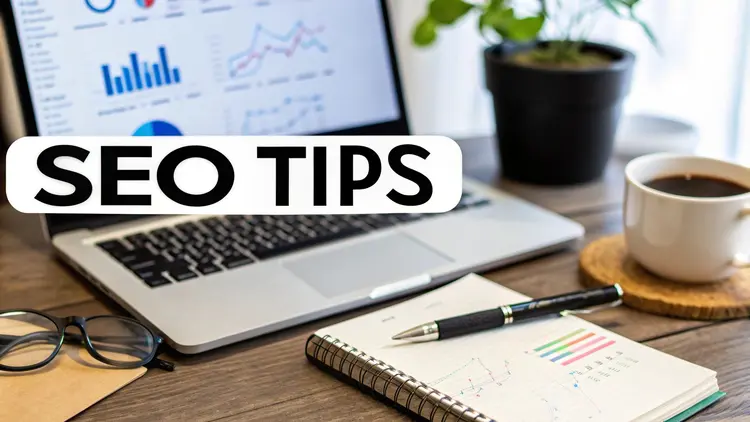I have practiced SEO for more than twenty years which enabled me to observe its peak evolution as well as multiple sudden reversals beyond number. Websites I managed reached the number one spot on Google with extraordinary traffic but these rankings vanished as Google implemented new algorithms.
My years in SEO have revealed all possible techniques, fads and misnomered optimization hacks which appeared and disappeared.
My extensive experience with SEO allows me to identify true effective strategies from worthless marketing claims. This guide presents vital SEO pointers that elevate your blog rankings through methods which resist the usage of temporary methods that frequently result in failed outcomes.
Every successful blog relies on solid keyword investigation as its SEO base. Beyond instrument-based searches of popular terms you need to grasp how readers find information through search and what action they aim to complete.
When searching for listeners, you must find the correct wavelength that reaches them.
Identifying Your Target Audience’s Search Terms
Tools like Ahrefs and Semrush provide valuable data, but they shouldn’t be your only source for keyword ideas. For example, if you run a vegan food blog, tools might suggest “vegan lasagna” as a keyword. But your specific audience might be searching for more targeted phrases like “easy vegan lasagna” or “gluten-free vegan lasagna.” Understanding these nuances makes a big difference.
Evaluating Search Intent and Competitive Analysis
Search intent – the reason behind someone’s search – should guide your content creation. A search for “vegan lasagna recipe” indicates recipe instructions while “best vegan lasagna near me” implies the need for restaurant recommendations. The fundamental distinction between these search terms determines the most appropriate content solution for the user.
Checking competitor’s ranking can expose potential content improvement opportunities.
The search for specific reader-used terms used during blog content queries constitutes complete keyword research. Free tools like Google’s Keyword Planner can help identify keywords with good potential. A smart approach is targeting terms with 100 to 1,000 monthly searches – this shows decent demand without facing intense competition from major sites. Learn more: Essential SEO Tactics to Improve Search Visibility
Finding Golden Opportunity Keywords
You can determine promising keywords through the analysis of your current blog traffic.
Which posts already attract visitors?
People use which keywords to reach those particular blog posts? The information obtained from this data demonstrates which content elements your audience responds to. Simply ask your readers for their preferred topics while seeking their unanswered questions.
Balancing Search Volume and Competition
Success in keyword selection depends heavily on achieving an equilibrium between search term popularity and market competition. Searches with high volume attract many users yet these terms experience heavy competition between various websites.
Searching for low-volume keywords allows better ranking positions although they usually result in lower website traffic.
To optimize your keywords you should target search terms which bring reasonable traffic while maintaining competitive difficulty levels that emulate finding an ideal fishing spot with both abundant fish and low crowd density.
Building Content Clusters to Establish Authority
The creation of content clusters should be part of your content planning strategy. You should develop an extensive pillar article about a wide subject so you can generate additional content that connects to it for extended value. Your content establishment as an authority combined with thorough information delivery to readers about their interests results from this method. Remember, this method creates a structured database that focuses on important subject areas.
Getting Started with SEO Tools: A Simple Guide

Starting with SEO tools can be daunting for many bloggers. The plethora of choices, ranging from free to premium options, makes it challenging to figure out where to start. This guide aims to clarify which tools are crucial and how to utilize them effectively to enhance your blog’s growth.
Start with These Free SEO Tools
The best place to begin is with Google Search Console. This free tool shows you exactly how Google views your blog, what search terms bring visitors to your site, and any technical issues that need fixing. Think of it as your direct connection to Google’s insights about your website.
Google Analytics is another must-have free tool. It reveals detailed information about your visitors – where they come from, how long they stay, and which posts they read most. This data helps you create content that better serves your readers’ interests.
When to Consider Premium Tools
As your blog grows and you need deeper insights, premium tools can be worth the investment. Ahrefs and Semrush help uncover new keyword opportunities and analyze what strategies work for other blogs in your niche. These tools can spot gaps in your content strategy and show where you can outrank competitors.
Focus on These Key Metrics
While SEO tools provide lots of data, concentrate on metrics that directly impact your blog’s success:
- Organic traffic: How many visitors find you through search
- Keyword rankings: Where your posts appear in search results
- Domain authority: How trusted your site is
- Quality backlinks: Links from other reputable sites
Create a Simple Monitoring Schedule
Make SEO monitoring a regular habit. Set aside time each week to:
- Check your rankings in Google Search Console
- Review traffic patterns in Google Analytics
- Look for new keyword opportunities in Google Trends
- Track which posts are performing best
Want to learn more? Check out this helpful resource: Beginners Guide to SEO.
Use Data to Guide Your Content
Your SEO data should direct your content strategy development. Create additional content that focuses on successful topics and keywords which you have observed through your SEO analysis. Monitor which content sections receive the most reader engagement then adapt your writing to match.
Tools for SEO function optimally with consistent application yet basic execution. Begin with fundamental SEO steps while concentrating on important metrics related to your blog before broadening your SEO practices as you develop more experience.
Creating Content That Ranks and Converts

To create search-friendly content which prompts reader action you must achieve the ideal blend. The process requires you to add target keywords into your content naturally alongside your original voice and valuable content delivery for readers.
A Well-structured Approach to Develop Attractive Headlines and Meta Descriptions
A compelling title functions as an introduction to your entire article. The opening should both attract readers and properly introduce the succeeding material. Your content should use target keywords naturally instead of engaging in keyword stuffing.
The title “The Easiest Vegan Lasagna You’ll Ever Make” provides a better example than “Vegan Lasagna Recipe.”
The meta description serves as an attention-grabbing preview that appears below web search results. The brief piece of content needs to attract readers through its essential points and advantages. Use your main keyword when possible yet focus first on creating compelling content that prompts readers to keep reading.
Internal Linking Strategies for Better SEO
Your website becomes more navigable by implementing internal linking that functions as virtual pathways. You let readers and search engines access additional content on your website through sensible page and post associations. Your strategic internal linking practice maintains viewer engagement duration and communicates content relationships to search engines.
Structuring Your Blog Posts for Maximum Impact
A well-structured post helps readers and search engines understand and engage with your content. Here’s how to organize posts effectively:
- Introduction: Hook readers immediately, introduce your topic, and preview what they’ll learn
- Body: Break content into digestible sections with clear subheadings that guide readers through key points
- Conclusion: Summarize main takeaways and include a clear next step for readers to take
For instance, when writing about sustainable living, you might target phrases like “sustainable energy” or “eco-friendly products” based on search volume and competition levels. Learn more from these SEO Tips for Bloggers.
Optimizing Existing Content for Better Results
SEO is an ongoing process. Review and refresh your published posts regularly:
- Update Information: Keep content current with new data, examples, and insights
- Add Internal Links: Connect older posts to newer related content
- Optimize Keywords: Work in newly discovered keyword opportunities naturally
By focusing on both search visibility and reader experience, you can create content that ranks well and resonates with your audience. The key is finding the sweet spot between SEO best practices and engaging writing that keeps readers coming back for more.
Mastering Technical SEO Without Being a Developer

You don’t need to be a coding expert to handle the essential aspects of technical SEO. With some basic knowledge and tools, bloggers can improve their site’s technical foundation. Let me show you how to boost your rankings by focusing on key technical elements anyone can manage.
Improving Site Speed for Better User Experience
Fast-loading pages keep visitors engaged and signal quality to search engines. When your site loads quickly, you’ll see lower bounce rates and better rankings. The good news is that speeding up your site is something you can tackle yourself.
Here are the most effective ways to improve your loading times:
- Optimize Images: Before uploading pictures to your blog, compress them using TinyPNG. This simple step can dramatically reduce file sizes while keeping images looking sharp. Think of it as decluttering – you want just what you need, nothing more.
- Add Caching: Install a caching plugin to create static versions of your pages. This helps returning visitors see your content faster since their browsers won’t need to process everything from scratch each time.
- Pick a Speedy Theme: Your theme affects how quickly pages load. Choose one that’s built for performance rather than just looks. A clean, minimal theme often works better than one packed with fancy features.
Mobile Optimization for a Wider Reach
Since most people now browse on phones and tablets, having a mobile-friendly site is no longer optional. Google now uses mobile-first indexing, which means it looks at how your site performs on mobile devices when deciding rankings.
Take a moment to check your blog using Google’s Mobile-Friendly Test. Fix any issues it finds and make sure text stays readable across all screen sizes.
Minor tweaks here can make a big difference in how many people find and stay on your site.
Utilizing Schema Markup for Richer Search Results
Schema markup helps search engines understand what your content means, not just what it says. For example, recipe blogs can show cooking times and ratings right in search results. While schema may sound technical, many plugins can add it automatically. This extra context helps your posts stand out and attract more clicks.
Conducting Your Own Technical SEO Audits
Regular checkups help catch problems before they hurt your rankings. Free tools like Screaming Frog’s SEO Spider can scan your site for issues like broken links or missing descriptions.
Start with the free version to get comfortable with technical audits. When you find complex problems, don’t hesitate to ask an expert – sometimes, getting help is the most efficient solution.
Building Authority Through Strategic Link Building
Your blog requires authoritative backlinks to establish both search rankings and authoritative status. The practice of successful link building involves developing meaningful relationships alongside producing content that deserves to be linked.
Building Relationships for Natural Link Acquisition
Relationship building serves as a fundamental principle for obtaining natural links exactly as it functions during professional networking at industry events. Your effort should shift away from awkward link requests to establish meaningful connections with other bloggers and influencers who operate within your industry. Online communities related to your niche offer a valuable platform to join so you can participate in discussions while providing valuable contributions.
Developing authentic connections results in natural linking possibilities that emerge from joint work and mutual support networks.
The Magnet Approach involves developing content which attracts external links
Producing content that other people desire to utilize as references generates high-quality natural links. Any form of content with magnetic qualities can include extensive guides, original research findings, infographics, and videos that deliver extraordinary value.
Your goal should be developing resources that help solve difficulties and present information unavailable in other locations.
Outreach Strategies That Get Results
Strategic outreach multiplies the exposure of your excellent content.
The success factor depends on customized communication instead of generic bulk messages. Your outreach messages to other site owners should describe precisely how your content will help their audience. Demonstrate your research activities by recognizing their work through proper references alongside genuine points of connection. Such specific outreach methods help create stronger bonds between parties while increasing their response rates.
Evaluating Link Opportunities: Quality Over Quantity
One high-quality link often provides more SEO value than many low-quality ones. When assessing potential link opportunities, consider:
- Domain Authority: Check metrics like Moz’s Domain Authority to gauge site quality
- Relevance: Links should come from sites in your niche or related topics
- Context: The surrounding content and anchor text should naturally relate to your page
Creating Linkable Assets for Your Audience
Some content types naturally attract more links than others:
- Original Research: Conduct industry surveys or analyze trends to create citable data
- Free Resources: Develop useful tools, templates or guides that solve specific problems
- Visual Content: Create infographics and videos that others want to share and embed
Sustainable Link-Building Practices for Long-Term SEO
Build link acquisition into your regular content workflow with these ongoing practices:
- Keep top content updated to maintain its value and relevance
- Cultivate influencer relationships through genuine engagement
- Share expertise in online communities and discussions
The most effective link building emphasizes providing genuine value while forming authentic connections. By creating outstanding content and fostering relationships with others in your niche, you’ll acquire high-quality backlinks that naturally enhance your blog’s authority. Keep in mind that sustainable link building is a long-term investment—prioritize quality over quick wins.
Measuring Impact and Evolving Your Strategy

A successful blog requires ongoing monitoring and refinement of your SEO approach. By tracking key metrics and making data-driven adjustments, you can steadily improve your blog’s search performance and reach more readers.
Identifying and Tracking Key Metrics
Focus on these essential metrics that directly impact your blog’s growth:
- Organic Traffic: Monitor how many visitors find your blog through search. Rising numbers show your SEO is working.
- Keyword Rankings: Track where your content appears in search results for target terms. For example, check rankings for keywords like “seo tips for bloggers.”
- Click-Through Rate (CTR): A strong CTR means your titles and descriptions effectively attract clicks, especially for competitive terms.
- Bounce Rate: Visitors leaving quickly may signal content mismatch or technical problems.
- Time on Page: Longer visits usually mean engaged readers. Search engines view this positively.
Pay special attention to backlinks from respected sites, as these boost your authority with search engines.
Setting Realistic SEO Goals for Bloggers
Set achievable goals based on your blog’s current position and resources. For new blogs, aim to rank on page one for a few specific long-tail keywords within six months. More established blogs might target quarterly organic traffic growth targets. This gradual approach leads to sustainable progress.
Adapting Your Strategy Based on Performance Data
Regular analysis helps refine your approach:
- Content Audits: Review existing posts regularly. Update high performers with fresh details and internal links. Fix or revise underperforming content.
- Algorithm Updates: Stay current on search engine changes. When necessary, adjust tactics to match new guidelines, such as improving mobile optimization.
- Competitor Analysis: Study what works for others in your space. Note their keyword targets and content types to spark ideas.
Think of SEO as an ongoing process that needs regular attention and care to grow effectively.
These are my main seo tips for bloggers if you are just getting started.
Visit Lorelei Web today to learn how we can help optimize your blog’s performance and streamline your business operations.

Lorelei has been an online entrepreneur, marketer and writer since 2006. Her biggest passion is WordPress, which is why she switched to being a full-time blogger 20 years ago and hasn’t looked back since. With so many years of experience behind her, she is an expert in copywriting, SEO, marketing and business strategies.






